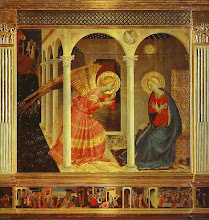This past week found me at my daughter's school, filling in for the music teacher who was taking some personal days. It was a lovely and creative interlude, though it took time away from this blog. But watching and listening as children from first through fourth grades created their own sound orchestras and then took turns conducting them was worth the change in daily routine.
A sound orchestra relies on created sounds to take the place of standard instruments. Repeated words or phrases, hums, tsks, pshas, oohs can all be a part of the orchestra as long as they are uttered within the beat pattern established by the conductor. So one group might chant "chicken legs, chicken legs, chicken legs," and then on the fourth beat another group says "ooh." Add a contrasting section of "chick-a-saw, chick-a-saw, chick-a-saw, saw,", accompanied by tongue clicks and ta daa...orchestral texture is demonstrated, sort of. It's a way to reduce something beautiful and sophisticated to a few of its essential elements and make it accessible to children. Children, I might add, who seem to know which pop star had a mental breakdown, and who's the cutest Jonas Brother but have only the haziest idea of what Mozart accomplished by the time he was their age.
While I would not rely on such reductive techniques alone to teach music, there being after all no substitute for simply listening to, say, a Mozart symphony, it has its place. Art teachers reduce art in the elementary grades to color and line and shape, texture and form. Music teachers introduce rhythm, pitch, color, melody and harmony and texture. For the most part, my temporary students seemed to enjoy and benefit from the experiment, never mind the occasional suggestion that a burp would be a great sound to accompany "chicken legs", or "ka-boom" was a really cool way to end a segment. Wisely, I think, I didn't tell my students about the Fourth of July concert I attended last year which featured the William Tell Overture, accompanied by inflated paper bags being popped by each member of the audience to simulate the sounds of cannons. It was a raucous evening, all told.
On Wednesday the school held mass and included the imposition of ashes. Students from Kindergarten through eighth grade, teachers, staff and visitors all received ashes, wearing them with a variety of expressions, some subdued, many quiet and prayerful indicating a sense of awe and reverence for the occasion. I always enjoy watching the children who are the silliest in class (the proponents of burping as a form of musical expression) transform at mass into suggestions of their future grown up selves, hands folded, eyes alight as the ashes are dabbed onto their foreheads. "Remember man that thou art dust and unto dust thou shalt return." It's quite possible that an eight year old boy enjoys this notion of dust for its connotations of the outdoors and the playground. It's also possible that a child burdened with too many expectations from teachers and parents should for a few minutes enjoy a sense of relief that after all we are only dust. It's for once an attainable goal, achieved by the mere fact of having been born, and it's a leveler as well. The honor roll student wears the same blurred ashy smudge as the student who struggles with dyslexia or depression. "I belong" the ash proclaims, and for too many students , the need to belong is undermined daily in ways sometimes too small to detect even by the student, but the effects show themselves in outbursts of temper, or sagging grades, aloof solitude or frequent tears.
"Man is dust and to dust he shall return, but he is precious dust in God's eyes, because God created man for immortality," Pope Benedict reminded us on Wednesday. How we need to hear those words each year, sweeping away as they do everything but the most essential in our lives: our complete dependence on the loving God who created us, from whom we came and to whose arms we will return, we hope and pray, for all eternity. The ashes are a gift, a sign of life reduced to its barest elements.
I asked my daughter what she thought as she received her ashes on Wednesday. She, being twelve and not always predictable answered, "I don't know."
"Did you feel loved by God?" I asked.
"Yes."
We are dust, but we are precious dust, precious in the eyes of God. I wonder if every child knows that or connects that truth to the ashes they receive each year on Ash Wednesday? Surely a few at least and more will grow to understand it. Just as they grow to understand after First Communion that a sip of wine and a bit of wafer offer them, not just the sign but the real presence of Jesus himself.
In sacramental and in sacrament the fundamental elements of human life are offered back to us with their substance glorified. Ashes point us to God and bread and wine give us Jesus.
The sacrificial walk during the days of Lent offers us a span of time to refocus on the basic elements, and allow them to alter how we view one another even as we deepen our understanding of God. I can't claim to be anything more than a beginner on the way toward regarding everyone in my life as precious dust, but by grace perhaps I'll inch forward.
"Dust, dust, precious dust"...it doesn't have quite the easy rhythmic snap of "chicken legs, chicken legs, chicken legs ooh ," ....but noone said life with God was entirely easy.
Friday, February 19, 2010
Subscribe to:
Post Comments (Atom)

2 comments:
This is a great blog mom!
you have great pictures
Post a Comment